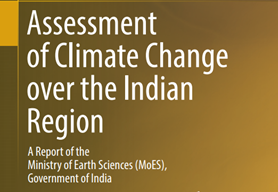
Ministry
of Earth Sciences, Government of India published its first-ever national
forecast report on the impact of global warming Assessment of Climate Change over
the Indian Region. The report details
impact of climate change on rainfall patterns, temperature, and sea-level rise,
tropical cyclones, and effects on the Himalayas in the Indian region.
Warm
climatic conditions also create a conducive environment for the spread of
vector-borne diseases such as malaria, dengue, and chikungunya fever, etc.
posing serious health concerns. As nations across the world prepare to recover
from the pandemic, climate change mitigation and public health must be at the
forefront of the response and recovery strategy.
Through
the National Programme on Climate Change and Human Health, National Center for
Disease Control has been working with states to build the capacity of medical
officers to understand the impact of climate change on health. It is being done
through training programs and mainstreaming of climate impact on human health
in the medical curriculum. The program is also creating systems to collect data
for evidence-based impact mapping of health issues across the country.
WHO
India office has been closely working with government and other partners in
supporting the development of readiness plans and activities, for public health
such as conducting health vulnerability and adaptation assessments, health c
adaptation plan, assessing the health co-benefits of reducing air pollution, improving
water safety and safe management of sanitation services.
